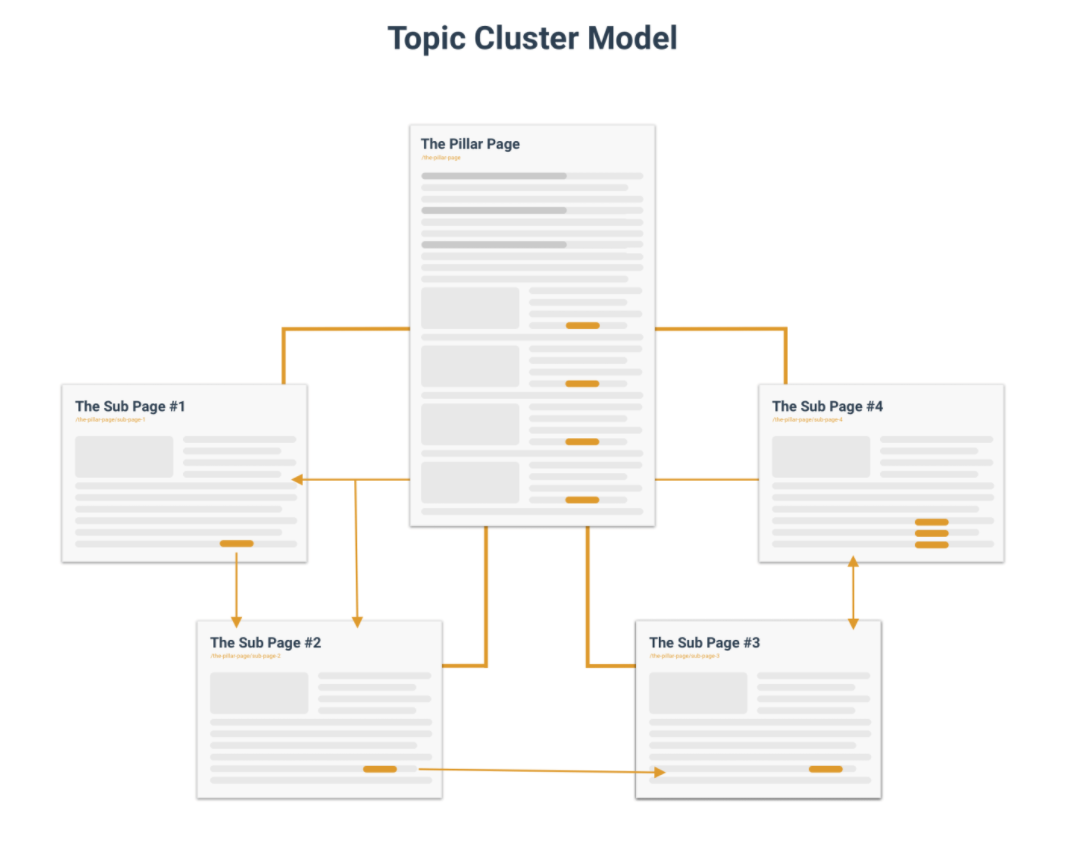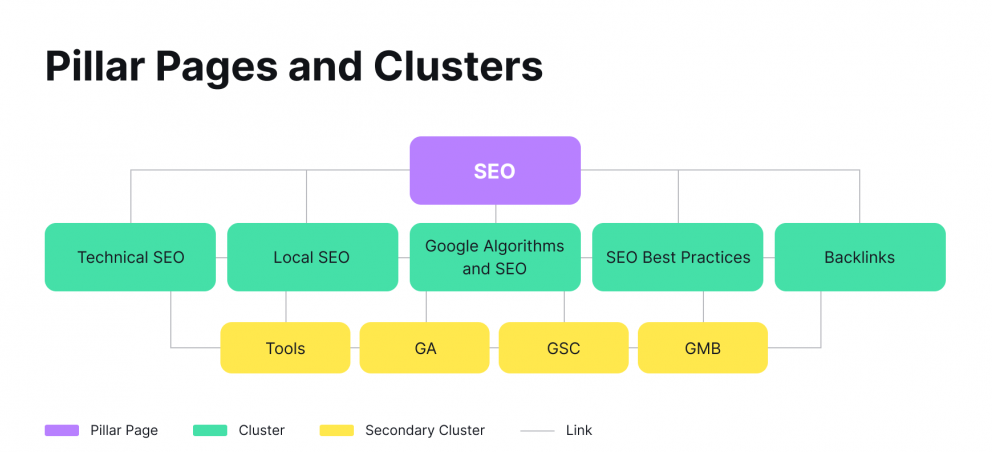Content clusters: The Free SEO Strategy
This is done by organizing content topics into pillar and cluster pages. When it comes to readying your website content for success, it’s important to use different levels of pages based on the relevance of the topic. This approach, known as content clustering, will help you adapt to Google’s constantly changing rules. Rather than relying solely on focus keywords, an organized and structured set of web pages will be more rewarding in terms of SEO. If done correctly, the benefits of implementing this strategy will far outweigh any other SEO approach.
Category: SEO
Breaking Down Content Clustering
Content clusters can help search engines prioritize pages for complex queries by recognizing links between them.The structure of a content cluster is straightforward. It comprises three main elements: pillar content, cluster content, and hyperlinks. Pillar content is the primary subject matter of a particular topic. It is the bread and butter of your content and holds absolute importance.
The next step after creating your pillar content is to focus on the cluster content. This supporting content is specifically designed to cater to a niche sub-section directly related to your pillar content. To understand it better, you can think of it in terms of categories and sub-categories. For instance, if you go to a restaurant and find a menu that only lists chicken dishes, then the chicken would be considered the pillar content. The items on this specific menu, such as chicken nuggets, would be regarded as the cluster content. The hyperlinks connect these two elements, and in most cases, they reference each other.
Source
Why is Content Clustering Important?
Content clustering is a crucial aspect of website structure and organization. Its importance rests in its ability to connect seemingly unrelated content into a structured framework, giving it a purpose and making it relevant. By doing this, the content’s hyperlinks gain more importance and meaning, forming an internal network of links that aids website navigation. The internal linking framework also means that the content is more organized, and the pillar content is optimized around specific keywords. The linking framework supports the focus keyword, making it useful for broader subjects and covering every aspect of the overall topic.

Source
Here is more information about Pillar Content
Content Clustering and SEO?
Have you ever considered the importance of content clusters for search engine optimization (SEO)? To illustrate, imagine going to a library in search of a book about the 1900s and finding a whole section dedicated to every year between 1900-2000, with each year having its own breakdown for every country. It’s the organization of data that plays a significant role in SEO. When someone searches for a keyword, if the content cluster on your website has content focused on that particular keyword, it will be presented as a search engine result. This allows the search engine to filter through your content cluster and display the specific information related to that keyword, which is all on your website.
Content clustering is an essential aspect of SEO, and if executed correctly, it can exponentially enhance traffic to your website and make it a prominent source for your target keyword. Reddit is a perfect example of content clustering and pillar page strategy. It has numerous sub-sections dedicated to different topics, with individual posts and active comment sections. The entire structure of Reddit is based on content clusters and pillar pages, which makes it an ideal platform for online discussions.
Other examples of this would also be Yahoo, Quora, and 702 Pros.

Source
Utilizing Content Clusters
All content clustering strategies rely on one crucial element, which is the pillar page. It’s essential to understand that the pillar page is the center of gravity around which your content revolves. If you need help to identify what your pillar topic should be, you can review your focus keywords to gain a better understanding of what your pillar page could be about. To create dynamic content that speaks to your audience, you should focus on frequently searched terms that are relevant to your content. After selecting the pillar page topic, you can base your content on the focus keywords.
Once you have created content around the focus keywords of your pillar pages, you can then create supporting content around them, which is known as cluster content. This supporting content directly correlates with your pillar page and provides more information on the topic. Each post that you create will be referencing your pillar page. For instance, if your pillar page is about culinary science, each post can feature a recipe and be related to cooking, baking, barbecuing, or prepping, all of which are relevant to culinary science. By breaking down topics into smaller parts, you can get closer to the focus keywords, which is beneficial for your website’s ranking.

Source
Content clustering is an effective strategy for maximizing the potential of your website, but it is essential to ensure that all aspects of SEO are met. To develop a successful content clustering strategy, it is crucial to lay a strong foundation. Mastering the basics of SEO is essential to achieving this goal. What’s the point of learning a strategy that you won’t be able to utilize at any time? It takes time and effort to structure everything correctly. That’s why SEO requires time, but if used correctly, all your hard work and efforts will pay off.
If you need to learn more about SEO or just want to learn more in general, check out this post by Justin. If you like my content and wanted to read more, check out our blog page..